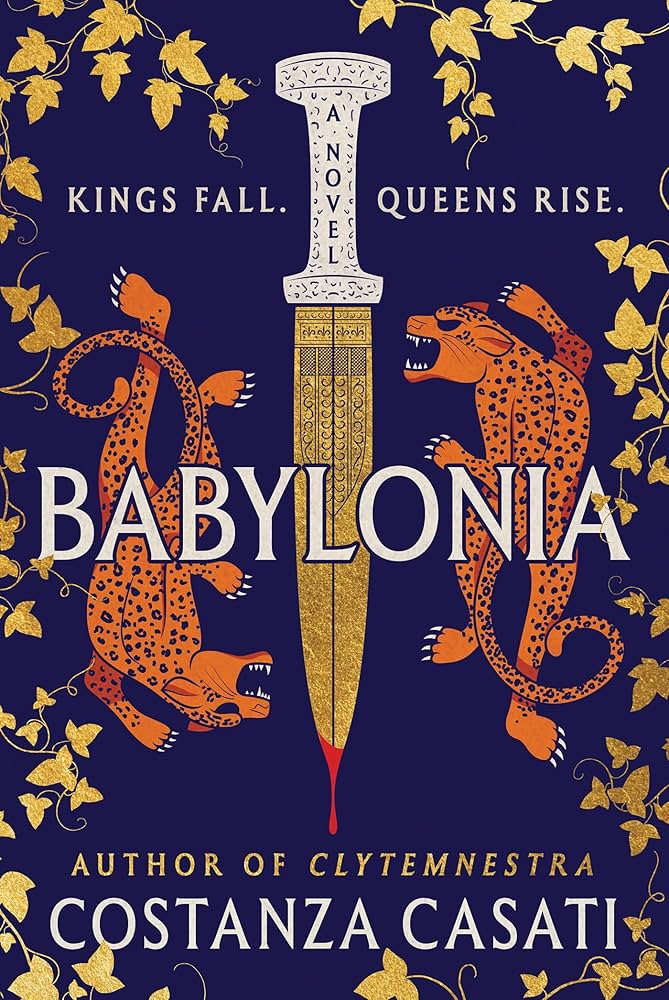The figure who inspired Babylonia was unknown to me before reading this novel, but I did recognize two other aspects of the book–the author, Costanza Casati, and my fondness for books with blades on the cover. A little different from the previous books in this series, there is at least confirmation of its titular figure being a real person.
Casati’s novel is a reimagining of the story of Semiramis, the more commonly known Greek version of Shammuramat, the Assyrian Empire’s first and only female ruler. We know that Semiramis is based on this real-life Queen, whose memorial stone (very uncommon for women in ancient Assyria) identifies her as the wife of Shamshi-Adad V, the mother of Adad-Nirari III, and daughter-in-law of Shalmenesar III. Although legends of Semiramis rising from humble beginnings to becoming the first and only ruler of the Assyrian Empire began with ancient Greek historian Herodotus, very little is known about her rule. It’s generally understood that Summaramat married Shamshi-Adad V, the king of Assyria, after he won a Civil War over the throne with his brother. After her husband’s death, she served as queen while her son, Adad-Nirari III, came of age.
It’s therefore difficult to tell how much of the stories of Semiramis– who appears notably in Dante’s Inferno, Voltaire’s tragedy Sémiramis, and Gioachino Rossini’s two-act opera Semiramide–is based on fact and how much is mythologized. Legends describe Semiramis as a great warrior, a fierce leader, and liken her to Ishtar, the Mesopotamiam goddess of love and sex often associated with war and justice. She’s often portrayed as a seductress, to the point where she’s found in the Circle of Lust in the Inferno.
Casati’s story, in contrast, begins with Semiramis’ early life as an impoverished, abused orphan in the outskirts of the empire. Her life begins to change when she’s noticed by the area’s new governor. Thrust into the treacherous political landscape of the Assyrian capital, Semiramis makes allies and enemies, fighting for her place in a brutal world dominated by men. The story that follows is one of love, loss, battle, grappling with violence, ambition, betrayal, and most of all, the remarkable life of a woman coming to power in a world determined to keep her restrained. Babylonia portrays the mysterious queen Shammuramat and the legendary Semiramis as one and the same, imagining the story of one woman’s unprecedented rise to power. While the perspectives of men are included, this is a novel told primarily through Semiramis’s point of view, allowing us to understand this figure in a new light.
I have an endless fascination with the women who fall through the cracks of history, whose stories are often skewed by the writings of men, and who over time have become more legend than person. Costanza Casati’s Babylonia offers a glimpse into Shammuramat/Semiramis’s story, one that gives her agency while maintaining her complexity and humanity. Casati describes the novel as a story of ambition, passion, and power–themes that are the foundation of this novel and its reimagining of Semiramis. If you need any more convincing, here’s one of my favorite quotes: “Can we grasp the instant when our fate turns? Or can we understand it only later, once the moment grows into a memory?”

